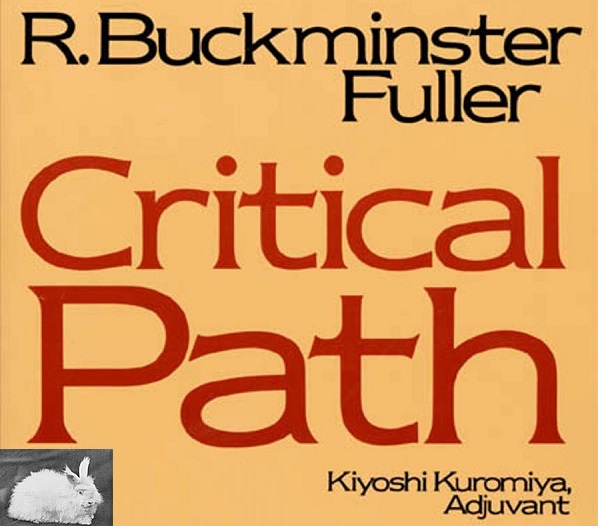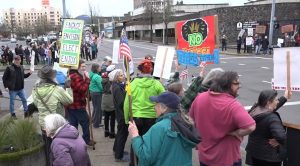Public warns EWEB on natural gas, biomass, nuclear energy
10 min read
Public comment from EWEB’s last two board meetings: warnings about natural gas and biomass; with nuclear being considered too, a call for the Citizen Involvement Committee; and EWEB is urged to think outside the box. In October:
EWEB: The first person up is Mark Robinowitz.
[00:00:15] Mark Robinowitz: I have two quick things for your consideration. One is WECC, the Western Electricity Coordinating Council, mentioned that natural gas combustion is the largest energy source for the Western power grid, not hydroelectricity.
[00:00:32] Hydroelectric is, of course, locally abundant, but not in the rest of the Western grid. And the Energy Information Administration of the U. S. government also mentions that natural gas is the single largest energy source for electric generation. We do have a lot of dams, but there’s also been a number of large natural gas installations added in recent years.
[00:00:56] One at Boardman, in particular, where the last coal burner in the state closed about three years ago, is now a large natural gas generator. There’s another large one at Klamath Falls near where four dams are being dismantled, and the existence of that natural gas generation is a key facilitator of the dam removal.
[00:01:17] EIA also mentions that 2022 was a new peak for U.S. electric generation surpassing the 2018 previous peak, and natural gas was critical for that increase.
[00:01:30] So when we’re talking about electrification, we need to talk about where the electricity comes from. And since EWEB is toying with the idea of embracing new nuclear reactors as the answer, I recommend you consider attending the new documentary, Atomic Bamboozle.
[00:01:47] It may be the best documentary about plans for smaller nuclear reactors, but it’s also the only documentary about smaller nuclear reactors. It also covers the rise and fall of the Trojan nuclear reactor on the Columbia and also the outrageous legacy of the Hanford nuclear reservation, the most polluted place on the planet.
[00:02:08] Legendary energy activist Lloyd Marbet helped get Trojan closed and also helped with the citizen initiative in 1980 that makes it illegal to build new reactors in Oregon until there’s a national nuclear dump for the irradiated fuel rods. So: Atomic Bamboozle.
[00:02:26] And I’ll close with a quote from the legendary David Brower, one of the great environmentalists of the United States, who said: Is the minor convenience of allowing the present generation the luxury of doubling its energy consumption every 10 years worth the major hazard of exposing the next 20,000 generations to this lethal waste?
[00:02:49] EWEB: Next, Tana Shepard.
[00:02:51] Tana Shepard: Hi, I’m Tana Shepard, also known as Eco Chick here in Eugene 4J and I just like to come to express my gratitude, I guess, and my attitude, for all the support that EWEB gives School District 4J each year with our education programs.
[00:03:07] So far things are off to a smooth beginning, but it’s pretty busy. I’m without a program assistant again, so I’m kind of trudging forward as a soloist making it happen, but we have our salmon season underway. I’m serving 45 teachers this year, almost 1,600 students, and are going to be raising salmon in their classrooms and learning about the importance of salmon as a keystone species.
[00:03:30] And then we are taking 610-ish third- and fourth-graders on Salmon Watch Field Trips, so to enhance their experience and see that adult phase of the life cycle and learn more about the importance of water quality and all the things that they need to survive in their habitat. And what’s the big idea with riparian zones, things like that.
[00:03:52] We’re starting our student 4J Climate Justice Team up again. For your reference, this is high schoolers, representatives from each of the high schools that come together around climate education and action items within our district.
[00:04:06] It’s the third year of a very successful newsletter called Eco Experience that’s going out to all 4J staff and we’re over 1,000 readers now. It’s basically monthly resources and tips and ways to just essentially to help have a more Eco Experience in your life.
[00:04:25] And we’ve been a really big part of getting the 4J Love Food Not Waste program off the ground. And we currently have 100% participation. Last year we were able to keep out almost 2 million pounds of food out of the landfill. And so this is a great climate mitigation strategy that 4J is embarking on. And so, yeah, just, I would just like to give an update several times a year, just so you know what we’re doing, what we’re up to.
[00:04:53] And yeah, I just appreciate the support and the ability to be able to share my passion to the students across our district. So thanks very much.
[00:05:02] EWEB: Next up we have Craig Patterson.
[00:05:04] Craig Patterson: My name is Craig Patterson, and I’ve lived in McKenzie Bridge almost 50 years. I’ve seen many changes. I also have extensive background in forestry and energy, spanning over 45 years. Today, there are two contrary issues I briefly speak with you tonight about. By contrary, I mean, opposing views with actions. The two issues are:
(1) Carbon credits/Forestry Lab and Seneca Sierra Pacific biomass plant, and
(2) McKenzie water quality and new houses and foundations on the river side of the highway.
[00:05:52] I see EWEB is supporting and advertising and attempting to count global warming and carbon sequestering through its forestry lab in carbon credits. I had a long talk with Andrea Wade today.
[00:06:07] However, I question the validity and integrity of such an effort in light of EWEB’s buying, supporting the non-disclosure Seneca Sierra Pacific biomass contract being almost two and a half times the BPA wholesale rate as released by the Register-Guard.
[00:06:32] And then Eugene gets the pollution for free, 40 times dirtier than coal;. And biomass is 40 times dirtier than coal and 300 times dirtier than natural gas. It’s a function of energy density, a key factor which is little understood.
[00:06:51] It makes no sense to buy/support biomass and then attempt to address the issue with a forestry lab of questionable value, particularly in a cut-over plantation. Remember, the largest and oldest Forest Service experimental forest is just up the road: The HG Andrews Experimental Forest. This contradiction needs addressing, as integrity is important.
[00:07:21] Second: McKenzie water is some of the finest in the state as a resource to protect. However seeing the numbers of foundations and houses on the river side of (Highway) 126, where there isn’t sufficient room for a septic tank, is very suspect. What is EWEB doing to monitor Lane County and building permits to ensure proper setbacks? Also, what is EWEB doing to monitor the penta(chloraphenol) plume under the old Weyerhaeuser mill as Rainbow and SUB (Springfield Utility Board) have? Water districts have put in extensive carbon filtration systems.
[00:07:59] These issues need to be addressed in a coherent and integrated way and not as contrary positions and perspectives.
[00:08:12] EWEB: Next up we have Kathy Ging.
[00:08:16] Kathy Ging: This is Kathy Ging. My first comment regards my concern that the public was essentially left out of the integral involvement in planning the Energy Integrated Resource Plan, at least in the way it used to be involved. Essential and missing is the Citizens Involvement Committee that would meet every month for practically a year.
[00:08:38] Historically, EWEB conducted a robust PR movement to solicit public participation via having a review committee, with staff overlooking the committee’s discussion. It would have been particularly significant this year, as small nuclear plants are being considered in EWEB’s long-term portfolio.
[00:08:59] It is especially egregious that a citizen committee was overlooked. A few years ago, $200,000 was spent on this committee as a sumptuous deal and a spendy facilitator were hired, which could be done for a lot less.
[00:09:15] My second comment has to do with the conversation with an EWEB staff person a couple months ago about my concern that EWEB is not educating people or emphasizing the need to have hybrid cars that run not only on batteries, but on liquid fuel.
[00:09:32] The research I’ve done, I would only buy a hybrid auto, using the battery and liquid fuels. Although hybrid’s more spendy, they are more resilient as aging grids will not be able to handle the increased electric load.
[00:09:47] Warning about all electric cars, especially a battery-only energy policy, the author of Alcohol Can Be a Gas, David Blume, who’s been working on hydrofuels for over 30 years, which is also the name of his book, stated on a national radio show in 2022, the batteries only will not be able to supply 100% of our transportation needs. So I’m wondering why EWEB is leaving this out of their education to the public.
[00:10:16] And my next comment is, I would like to hope you would get behind Lisa Arkin and her Beyond Toxics proposal to spend about $15 to $22 million on solar electric cells at the former West Eugene (J.H.) Baxter site.
[00:10:30] Two members of the community who were both associated with the University of Oregon in and out at different times including Sara Mazzi and a guy named Josh Stowe, had presented papers about community-supported energy they had done with their respective institutions and companies, and EWEB and everybody totally had adored that.
[00:10:51] Finally, a great fine discussion about shutting down the Leaburg Lake and the vociferous opposition from people. I think EWEB needs to take another look at their current position.
[00:11:02] Personally, I think EWEB has taken the wrong direction and letting go of a plus or minus 5% of electricity storage at a time when grids are vulnerable to disruption from natural and manmade causes.
[00:11:14] Elliot Grey: My name is Elliot Grey, and I own a Model 3 Tesla, and I have a home Type 2 charger. I’m in favor of EWEB adopting the EV (electric vehicle) and DR (demand response) standards.
[00:11:23] I recently drove with my wife the Tesla across the country. We drove through Eastern Oregon, Montana, South Dakota, Michigan, to New York, and then we drove down through Kentucky, Arkansas, Mississippi, Oklahoma, Texas, Arizona, Nevada, back to Oregon.
[00:11:42] Through that, we had absolutely no trouble charging the Tesla. Yet, in Eugene, there are no high-speed chargers in our service area yet.
[00:11:52] In Podunk, Arkansas (sorry, Arkansas), or way-Eastern Oregon, there are high-speed chargers. EWEB is behind the times here. High-speed charging and solar and demand response across the country. You see it happening.
[00:12:09] We saw community solar in the Midwest. We saw community solar in the East. We saw solar charging on lampposts in Princeton, New Jersey. We saw solar charging, community solar in small communities. We saw big solar. We saw solar in parking lots. We saw solar in all different kinds of locations.
[00:12:34] We talked to people in rural areas and in small communities, such as ours, where the utilities were allowing the people to put back into the grid.
[00:12:46] I also wanted to comment that EVs are coming on strong. I just was surprised to hear that through Car and Driver magazine, that the number one selling vehicle in the United States right now is the Ford F150 electric vehicle. The number one selling SUV in the country is the Tesla Y. The number one selling car, that’s a car, is the Model 3 Tesla.
[00:13:14] So EVs are coming on strong. The number one trade-in right now vehicle in the country is the Toyota Tacoma pickup truck. And it’s being turned in for electric vehicles.
[00:13:27] The comments that I read said that you expect that the enterprise software will be up and running for demand by 2030. That’s a long time. Whereas other areas, they’re already using enterprise software. Thank you.
[00:13:44] Curtis Blankinship (Nov. 7, 2023): I’m Curtis Blankinship, Springfield, Oregon. I used to own 10 acres out here on Lorane Highway a long time ago. I’m been a LEED certified designer since 2002, and have studied sustainable design basically since I was 18 years old and experimented with it here.
[00:14:00] So what I want to talk about is rooftop solar. There’s a book by Buckminster Fuller called Critical Path. In there there’s a diagram that shows all the matter that has been on the earth as a little dot, and then all the matter that the earth is made of, and then all the matter that has ever been on earth is this giant circle right next to it.
[00:14:21] What’s missing from this equation is sunlight. That is where all your energy is coming from so, I don’t feel that you guys are doing due diligence enough in exploring rooftop solar.
[00:14:33] And especially I just was coming from the forum at the U of O here, where they’re just not even looking at rooftop solar and what they’re telling me is that there isn’t enough, it drops drastically in the winter.
[00:14:44] But there’s plenty of ways to supplement that. You were just talking about hydroelectric. But also, they’re right at the cutting edge of thermoelectric generator technology. You can take the waste heat from those buildings and put a thermoelectric tiles on there during, during the winter when you’re trying to gain that extra amount of energy.
[00:15:03] But better still, you have all of these parking lots—and I used to work grocery for 12 years. The refrigeration alone in these grocery stores, as you know, takes a huge amount of energy. You have all these parking lots that are creating a heat island effect. Put covered parking lots on there and get more solar panels that way.
[00:15:20] Here’s a radical idea for you. I went to New Alchemy Institute in Massachusetts back in ‘94, and this lady had a greenhouse that was heated with Angora rabbits, okay, because Angora rabbits have a 108-degree body temperature.
[00:15:34] This is how far you could think outside of the box. Let’s have animal husbandry to supplement your solar heat, and let’s see the U of O create an Angora sweater. Bring back the Angora sweater! We’re going to have yellow and green Angora sweaters and save the climate and the world at the same time. Thank you.
[00:15:51] John Q: More written public comments are available on Google’s Journalist Studio, where you can search through our growing collection of local government documents.





